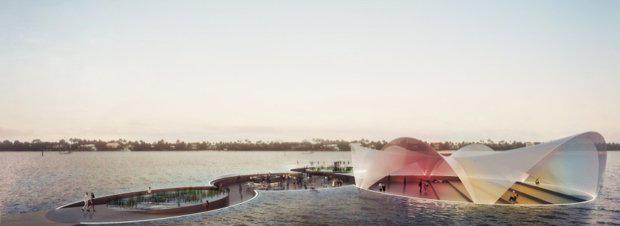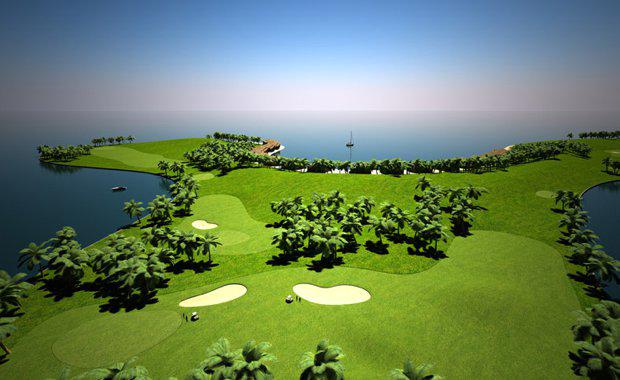Resources
Newsletter
Stay up to date and with the latest news, projects, deals and features.
SubscribeArticle by Neasa MacErlean
Across the world, architects are now looking to develop onto the 71 percent of the earth’s surface that builders have largely neglected so far – the water.
With half its population living below sea level, the Netherlands is a world leader in the growing area of floating buildings. The Amsterdam neighbourhood of Ijburg, including a development of floating 97 houses, is inspiring similar projects around the world.
In the port of Rotterdam, a floating pavilion can be hired for events on the Nieuwe Maas river and work is now due to start on a floating farm. “Building on water is becoming a feasible and practical option for cities faced with housing shortages and rising sea levels,” says Helen Gough, JLL’s Lead Director PDS the UK.
Many Dutch architects are advising governments and organisations on a number of projects. But the proposal which really puts the trend on the map comes from the world’s biggest architectural practice, Gensler. It has unveiled a plan for a 250-metre long structure which looks like an elongated bubble and could act as home for the Houses of Parliament on the Thames while their permanent Westminster building is being refurbished.
To date many floating projects – especially in the US and Canada – have been residential but Gough believes that the commercial sector has much to learn from this approach. “The opportunities beyond residential are really quite interesting,” she says. “It is the cost of commercial space and land which is encouraging people to think innovatively and out of the box now.”
Costs and climate change push floating agenda
Cost-cutting is a key reason behind the rise of floating buildings. The pioneering Urban Rigger development located in Copenhagen harbour is aimed at the city’s student population and will charge rents at about half the going rate in the Danish capital. Building costs are kept down by reusing shipping containers as the basic structure for the bedrooms, terraces, bike parks and other communal areas.

Currie Park, courtesy Carlo Ratti AssociatiMeanwhile Gensler estimates that its temporary floating Parliament idea would save the country £1.8 billion ($2.24 billion) compared with moving the UK’s political heart to multiple locations during the repair works.
With floating buildings very much in their infancy, the discussion is currently centered round their novelty and potential. However, with land at a premium in the world’s big cities, local authorities may not be so willing to simply give away space to developers, says Gough. “Will cities release rivers and waterways for free – or will they need to make a return?” she asks.
The extent of the affordable housing crisis facing some of the world’s big cities could be a major factor in their decision. The impact of climate change, particularly rising sea levels and flooding, could be another.
In London, Baca Architects, which constructed the world’s first amphibious house in 2014, believes the city’s waterways network are an untapped resource. “Flooding is likely to increase in frequency, severity and intensity,” Baca co-founder Richard Coutts tells Dezeen. “Designers need to create adaptable forms of architecture that respond to the uncertainty of future change.

The Royal Indian Ocean Club, courtesy Dutch DocklandsUnsinkable structures
There’s no shortage of projects and proposals – including the Floating Seahorse luxury villas near Dubai; schemes in the Maldives for the world’s first floating 18-hole golf course and a floating convention hotel; a floating plaza off Florida’s West Palm Beach. No single design approach is dominating so far. The partly-underwater Florida scheme, for instance, is based on submarine technology, built on a series of air chambers. WaterStudio, the Dutch specialist architects, are using a formula which it believes produces unsinkable structures (building concrete boxes for foundations and filling them with Styrofoam).
Many challenges still remain. Gough highlights a series of issues that have to be overcome – from ensuring water quality, connecting to the overall infrastructure and amenities, and to handling waste. And she adds: “You have to temper the uses of these developments to those that are suitable to a waterborne environment.” The collapse of a floating school in Nigeria recently underlined the potential dangers associated with this new and evolving form of construction and development
But many of these challenges are likely to be addressed as the technology and techniques are refined and scientific research exposes the effects of rising sea levels. New York, Shanghai and Mumbai are among the biggest cities most at threat. Conservative estimates put the waterline 60 cm higher in New York, for example, by the year 2100. A change of approach could provide some answers, says Gough. “Architects are now harnessing technology which allows us to work with water. We can respect nature rather than fighting it.”
Article by Neasa MacErlean, originally published by JLL.